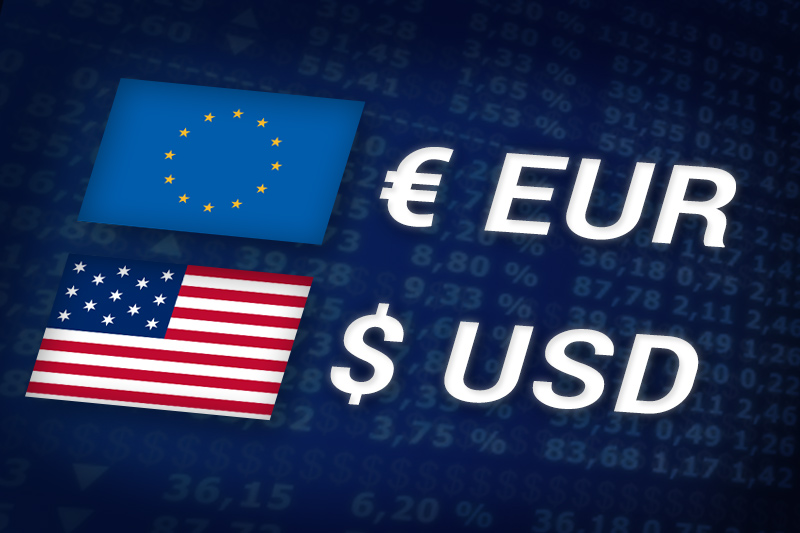Investing.com - Stronger than expected manufacturing data out of Europe and elsewhere in the world fueled hopes that the global economy is showing signs of recovery, which boosted demand for the euro in a global risk-on trading session that saw the dollar fall.
The euro was up against the dollar in Asian trading Thursday, with EUR/USD hitting 1.3186, up 0.20%, firming from a session low of 1.3158 and off from a high of 1.3187.
The pair sought to test support at 1.3027, Wednesday's low, and resistance at 1.3218, Wednesday's high.
European and German Manufacturing Purchasing Managers' Indices came in better than expected on Wednesday, while similar figures out of China surprised as well, helping to ease fears that the global economy was veering off its course to recovery and sending the euro rising in Asia on Thursday.
The Markit Economics manufacturing data based on a survey of purchasing managers in the euro region rose to 48.8 in January from 46.9 in December.
U.K. factory data pleasantly surprised markets as well.
In the U.S., jobs data from payroll company Automatic Data Processing (ADP) showed that the economy added 170,000 nonfarm payrolls in January, below expectations although manufacturing data offset the jobs numbers.
The Institute for Supply Management (ISM) said its January index of national factory activity rose to 54.1, up a full percentage point from a revised 53.1 the month before, and was at the highest level since June 2011 although slightly below market expectations,
The manufacturing price index rose to 55.5 from 47.5, above expectations.
The bottom line was the market welcomed manufacturing data and opted for assets bearing more reward than the comparatively less risky dollar.
"The main factor boosting the risk sentiment today is from the PMI reports globally," said Vassili Serebriakov, a currency strategist at Wells Fargo & Co. in New York, according to Bloomberg.
"Markets are pricing in a more constructive outlook for global growth in 2012, so that’s the main factor behind dollar weakness and stronger risk appetite."
The euro, meanwhile, was up against the pound and as well as the yen, with EUR/GBP gaining 0.05% to 0.8316 and EUR/JPY up 0.10% at 100.40.
The U.S. is looking ahead to Friday's official unemployment data, although on Thursday, markets will pay attention to initial jobless claims as well as preliminary data on nonfarm productivity and unit labor costs.
Later Thursday, Fed Chairman Ben Bernanke is set to testify on the economic outlook before the House budget committee.
The U.K. is to produce industry data on construction sector activity, a leading indicator of economic health.
Switzerland is to release official data on the trade balance.
The euro was up against the dollar in Asian trading Thursday, with EUR/USD hitting 1.3186, up 0.20%, firming from a session low of 1.3158 and off from a high of 1.3187.
The pair sought to test support at 1.3027, Wednesday's low, and resistance at 1.3218, Wednesday's high.
European and German Manufacturing Purchasing Managers' Indices came in better than expected on Wednesday, while similar figures out of China surprised as well, helping to ease fears that the global economy was veering off its course to recovery and sending the euro rising in Asia on Thursday.
The Markit Economics manufacturing data based on a survey of purchasing managers in the euro region rose to 48.8 in January from 46.9 in December.
U.K. factory data pleasantly surprised markets as well.
In the U.S., jobs data from payroll company Automatic Data Processing (ADP) showed that the economy added 170,000 nonfarm payrolls in January, below expectations although manufacturing data offset the jobs numbers.
The Institute for Supply Management (ISM) said its January index of national factory activity rose to 54.1, up a full percentage point from a revised 53.1 the month before, and was at the highest level since June 2011 although slightly below market expectations,
The manufacturing price index rose to 55.5 from 47.5, above expectations.
The bottom line was the market welcomed manufacturing data and opted for assets bearing more reward than the comparatively less risky dollar.
"The main factor boosting the risk sentiment today is from the PMI reports globally," said Vassili Serebriakov, a currency strategist at Wells Fargo & Co. in New York, according to Bloomberg.
"Markets are pricing in a more constructive outlook for global growth in 2012, so that’s the main factor behind dollar weakness and stronger risk appetite."
The euro, meanwhile, was up against the pound and as well as the yen, with EUR/GBP gaining 0.05% to 0.8316 and EUR/JPY up 0.10% at 100.40.
The U.S. is looking ahead to Friday's official unemployment data, although on Thursday, markets will pay attention to initial jobless claims as well as preliminary data on nonfarm productivity and unit labor costs.
Later Thursday, Fed Chairman Ben Bernanke is set to testify on the economic outlook before the House budget committee.
The U.K. is to produce industry data on construction sector activity, a leading indicator of economic health.
Switzerland is to release official data on the trade balance.
